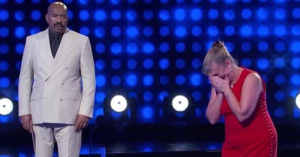
Lazy eye, also known as amblyopia, is a disorder that affects children where one eye’s vision does not fully develop. Typically, this impairs the child’s vision in their weaker eye, causing them to become more dependent on their stronger eye.
Examples of physical eye conditions that might result in the development of a lazy eye include:
As a result of a squint or strabismus, the weaker eye may be pointed upwards, outwards, downwards, or inwards relative to the direction the stronger eye should be facing.
A cataract may have developed in one eye, causing it to become clouded.
It’s possible that one eyelid is partially concealing the other. Ptosis is the term for this.
Squinting occurs as a result of an imbalance between the muscles supporting the eyes in this type of amblyopia. When relying on the images produced by the stronger eye, the brain essentially “ignores” the eye that is not straight. In order to attempt and retrain the child’s weak eye muscles, treatment methods include eye exercises and covering the “good” eye with an eye patch in order to promote use of the “bad” eye.
This refers to when the refractive error is greater in one eye than in the other. The brain “turns off” the more far-sighted eye and relies instead on the eye that provides a clearer picture. However, the weaker eye remains straight, meaning the problem may go unnoticed by parents or a GP. Refractive amblyopia may not be identified until the child has a vision test. This condition can be treated with corrective glasses or contact lenses.
This refers to when one eye is “deprived” of vision due to the development of a blockage such as a cataract. The ocular media becomes opaque, which prevents visual information from reaching the retina and then the brain. This form of amblyopia can affect one or both eyes and needs to be caught early to prevent the child form developing poor vision.





